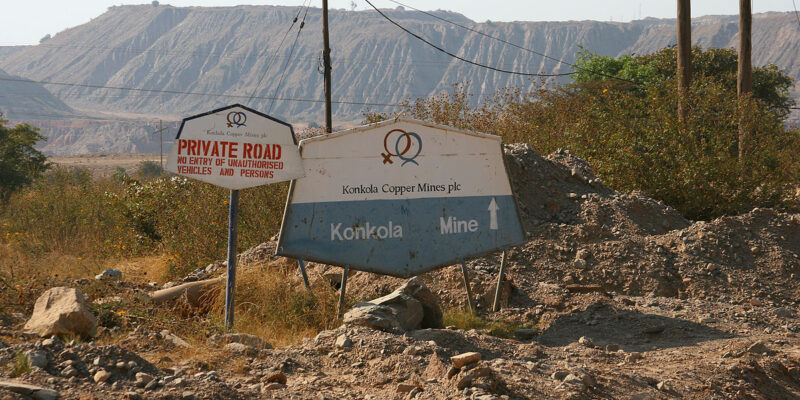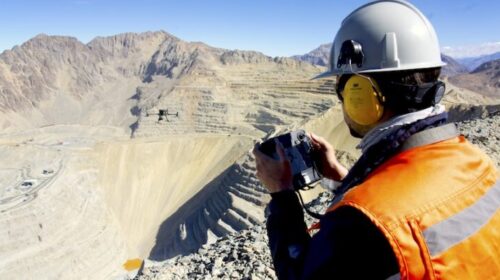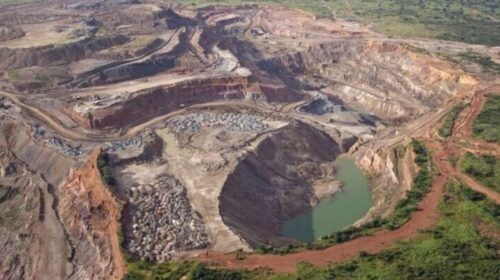Zambia’s KCM warns part of Nchanga openpit mine about to collapse
Zambia’s Konkola Copper Mines (KCM), a unit of diversified miner Vedanta Resources, has closed part of its openpit mine as a portion of the pit is about to collapse, the chief executive officer said late on Thursday.
KCM predicted that part of the Nchanga Open Pit in Chingola in Zambia’s Copperbelt area will cave in “anytime” in the next five days after geotechnical assessments detected some slope instability.
The slough – or caving in of the ground – manifested so far through tension cracks opening up is likely to stretch approximately 350 m and the estimated volume of the area involved is eight-million cubic metres, CEO Christopher Sheppard said in a statement.
Production was continuing elsewhere except for the at-risk areas which have been shut, a KCM spokesman said.
KCM has implemented measures to protect communities around the mining area and employees from the impact of the slough, Sheppard said.
“I must state in no uncertain terms that our priority is to ensure the safety of people first, and also make sure that KCM, public and private property are safe-guarded.”
The mine has marked out a 90-m wide hazard exclusion zone in which the potential collapse is expected to occur. It is “at least” 60 m away from nearby communities, he said.
Apart from the Nchanga open pit, KCM also operates the Nchanga and Konkola underground mines, concentrators, a smelter, a tailings leach plant, and a refinery.
Press Release
CHINGOLA, 2 July, 2020: Konkola Copper Mines (KCM) Chief Executive Officer (CEO) Christopher Sheppard has announced that the mine has predicted an impending slough (Caving in of ground) after its geo-technical assessments detected some slope instability at the Nchanga Open Pit (NOP) Cut 2 in Chingola.
The anticipated slough is manifesting through a series of multiple tension cracks, which have continued opening up almost parallel to the strike of the open pit east perimeter road in a South East–North West direction.
Mr Sheppard said when he addressed the media in Chingola today that preliminary indications have shown that the slough will be confined to a stretch of approximately 350 metres and the estimated volume of the area that would be involved in the failure is 8 million cubic metres (20 million tonnes).
The real time slope stability monitoring radar station is currently tracking the increasing movement of the slope inside the open pit and current predictions are that the open pit slope will fail anytime between today, 2 July and Tuesday 7 July, 2020.
He said, “I should hasten to mention that as a responsible management, we have already implemented a number of measures to avert a significant impact of the predicted slough on people, essentially communities around the mining area and our employees. I must state in no uncertain terms that our priority is to ensure the safety of people first, and also make sure that KCM, public and private property are safe-guarded.”
The mine has demarcated a hazard exclusion zone, which is 90 metres thick to provide for an acceptable factor of safety. The exclusion zone in which the slope failure will take place is thus at least 60 metres away from the nearby communities of Nchanga North (Buyantanshi Township and in particular Buntungwa Ward).
“All the structures within Nchanga North are situated on competent, stable basement rock which will not be effected by the sloughing of the open pit slope,” he added.
The CEO noted that KCM is currently rerouting power lines and water pipes, which carry water from Kafue Pump Station to the Nchanga Smelter and Mulonga Water and Sanitation Company on a stretch of approximately 650 metres and hoped works would be completed in the shortest possible time to avoid major disruptions to power and water supply.
In order to prevent inadvertent entry of nearby residents into the hazardous exclusion zone, members of the Zambia Police and KCM Security have been deployed full time to the perimeter of the exclusion zone.
The mine has been engaging various stakeholders including the Central and Local Government authorities, civic and community leaders in sensitising people to find common solutions together.





